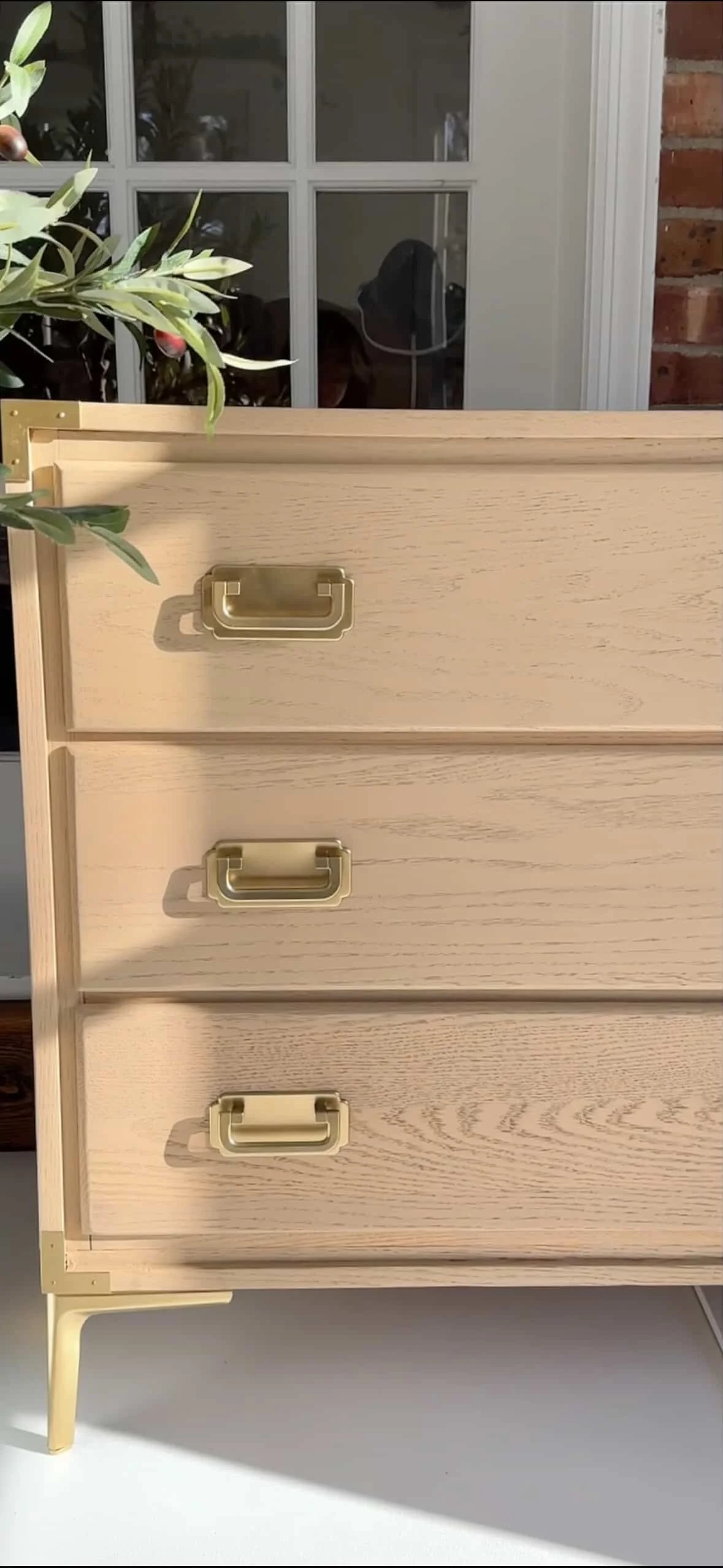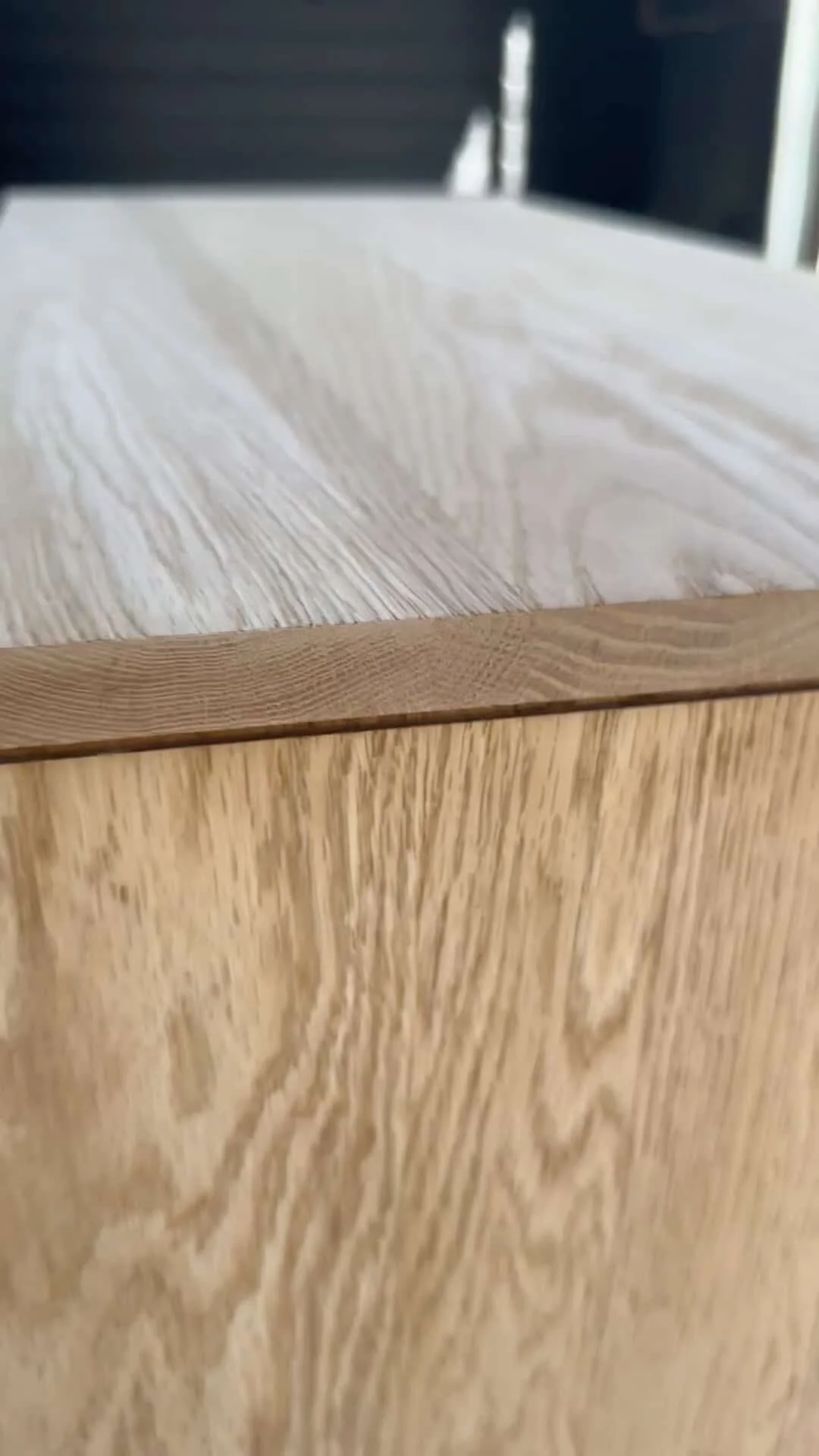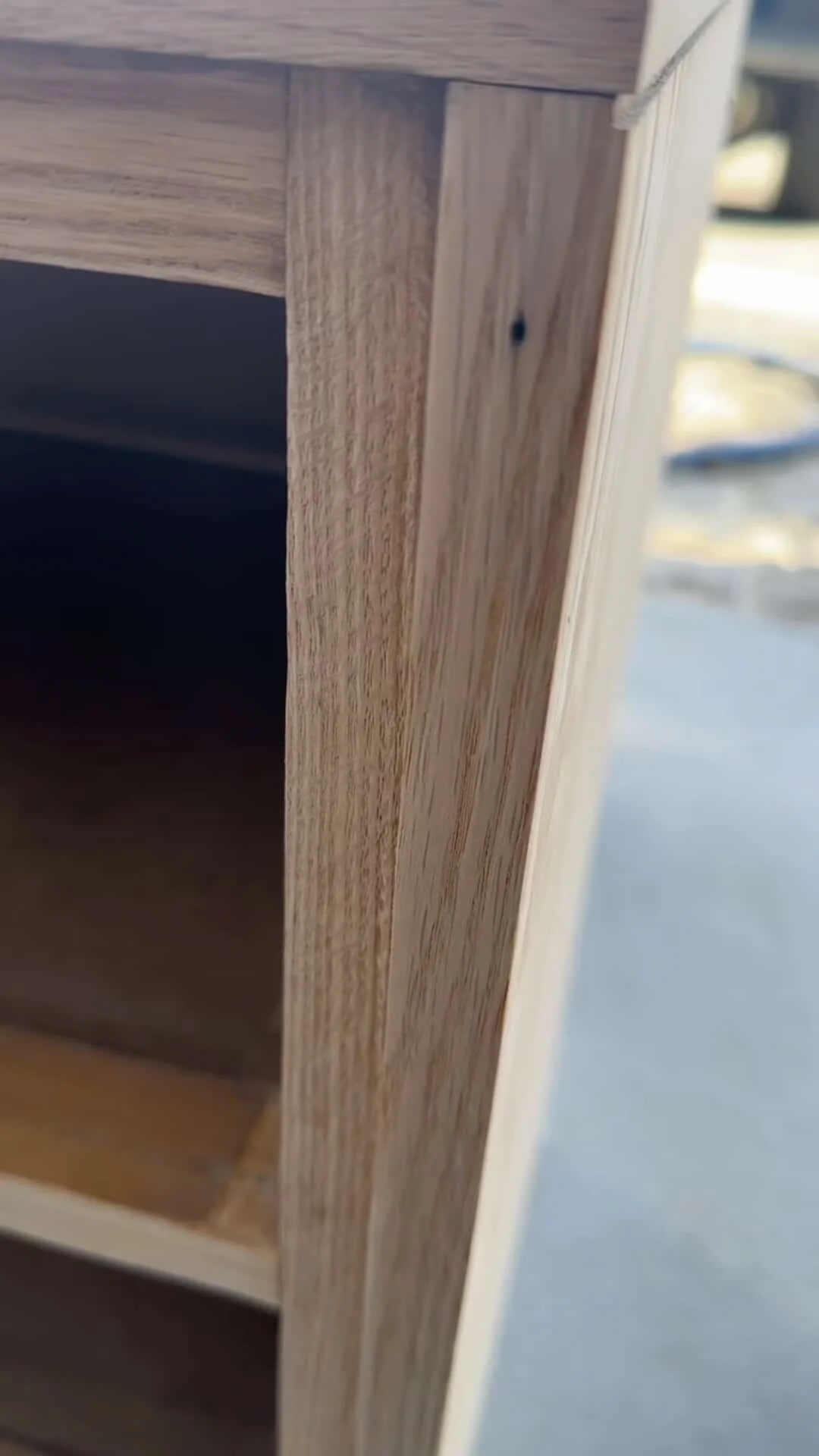WOOD CHECK
How to Tell If Your Furniture Is Solid Wood or Veneer
Whether you’re buying vintage, restoring a piece, or just trying to avoid getting ripped off by a misleading Facebook Marketplace listing, knowing what to look for matters. Here’s how to spot the difference like a pro.
1. Matched Grain = Veneer
If the grain on the drawer fronts flows perfectly from one to the next like a waterfall, that’s not solid wood that’s matched veneer. Veneer is a thin slice of real wood glued onto a stable core like MDF or plywood. It looks clean, consistent, and beautiful but that uniformity is only possible when the grain is controlled and applied intentionally, which solid wood can’t offer.
🔍 Clue: Perfect symmetry or continuous grain across drawers = veneer.
🧠 Why it matters: Solid wood grain is naturally inconsistent. No two boards are alike. If the grain flows too perfectly drawer to drawer, it’s a clear sign you’re looking at veneer — and that’s not a bad thing. Just not solid.
2. End Grain vs. Edge Grain
End grain is the part of the wood where you see growth ring, like the top of a fence post or a butcher block.
Edge grain is the side of the board where the grain runs in long, straight lines.
Solid wood: The grain goes all the way through. You’ll see it wrap from the top surface down through the edge and end.
Veneer: The grain is only on the surface. Look closely the edge will usually reveal a thin layer of wood on top of a different material underneath.
🔍 Clue: Check corners or drawer edges. If the top looks like wood but the side doesn’t match it’s veneer.
🧠 Pro tip: End grain is rarely faked. If the end of the board shows no grain or a completely different material, it’s not solid.
3. Drawer Clues: Inside Tells the Story
Drawers reveal a lot. Here’s what to look for:
Dovetail joints are a classic sign of solid wood and quality construction.
MDF or particleboard sides feel smooth, flaky, or clearly manufactured not natural grain.
Drawer bottoms that are thin, stapled, or bend easily are usually mass-produced and low quality.
🔍 Clue: Look at drawer sides and backs, not just the face. Solid wood will show real grain, sometimes knots or imperfections.
🧠 Pro tip: Knock on it. Solid wood sounds deep and dense. Veneer over MDF or plywood sounds lighter, even hollow.
4. What Does “Real Wood” Even Mean?
Sellers love to say “real wood” but that often just means “not plastic.”
Veneer is real wood but it’s not solid wood.
So what you should really ask is:
👉 Is this piece solid wood all the way through? Or is it veneer over MDF or plywood?
A veneered piece can be high quality. A solid piece can be poorly made. It’s not about one being better it’s about knowing what you’re actually buying.
5. Common Furniture Builds
(And What to Expect)
Mid-century modern: Veneered panels, solid wood legs or trim
Danish modern: High-quality matched veneer with plywood cores
Early 20th-century: Often solid wood, especially heavier or rustic pieces
Modern flat-pack: Veneer over particleboard (low durability)
6. Why Veneer Was (and Still Is) Used
Veneer lets makers use rare or expensive woods more efficiently.
It reduces warping by layering over stable cores like plywood.
It allows for things like matched grain, symmetry, and clean modern lines.
📌 You’re not getting “ripped off” if it’s veneered — especially if it’s done well.
7. How to Use This Knowledge When Buying
What to ask sellers: “Is it solid wood all the way through, or veneer over MDF/plywood?”
Don’t just rely on photos. Ask for edge or drawer detail shots.
Be cautious when listings say “solid wood construction” — that often just means some part of it is solid.
8. What You Can Refinish and What You Can’t
Solid wood = can usually be sanded, stained, or stripped.
Veneer = should be stripped before sanded , be aware of the grit you are usually 150 grit and up after stripping should be fine .
If veneer is bubbling, cracking, or delaminating — refinishing is more complex.
The Bottom Line
Matched grain drawers, no visible end grain, ultra-consistent patterns = veneer.
Visible grain through corners, random drawer patterns, natural texture = solid wood.
Neither is automatically better. But now you can tell the difference and avoid getting misled by listings that say “real wood” when they really mean “sort of.”


